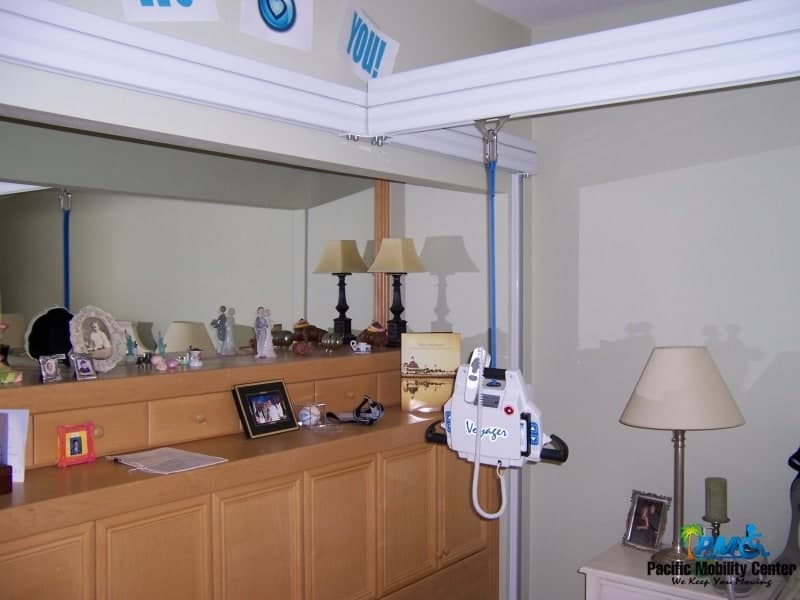Part 4 of Making the home safer for seniors and those with disabilities relates to living spaces in the home. Make sure that living rooms and common areas are designed with safety first, to reduce the risk of an injury in the home.
Making the Home Safer for Seniors and Those with Disabilities: Part 4 addresses living rooms and common areas designed with safety first. Steps including mobility devices can significantly reduce the hazards of the home, and curb potential risk of injury for seniors and those with physical limitations. Clear clutter and try to identify potential areas of risk, then reach out to mobility experts for devices, aids, and installations that can augment the home and preserve independence of those living there.
Living rooms and common areas designed with safety first is the goal
Barriers to enjoying common living areas may include access for seniors that live in their own homes. Ensure that your loved one has accessibility with augments and modifications that make the home more convenient and safe, while preserving the autonomy of the individual residing there.
Some ways to increase safety and access in common living areas include:
Widen doorways and walkways
Widen doorways and walkways to enhance access to and from common living areas. It is recommended that doorways be at least 32-inches wide to allow for clearance of wheelchairs and scooters, and public buildings must follow this recommendation to remain compliant with the Americans with Disabilities Act (ADA). Keep this width in-mind when creating paths or walkways to your door or on the property to maintain access for individuals with mobility aids or devices.
Install threshold ramps
To cut down on fall hazards, install threshold ramps in doorways to the common living spaces of your home. Door thresholds, on their own, can cause seniors living in the home to stumble and trip; these low-pitch ramps help curb this risk factor, making the home a safer and more accessible dwelling.
Buy a lift-chair
Hip recliners, also known as lift chairs, can make a significant difference in the effort and stability of an individual rising and sitting down. These typically feature a simple remote that gently raises and lowers the seat of the chair, as it assists the user get up and out of the chair. These are of great aid to those suffering from physical disabilities, recovering from an injury, or simply for an added level of safety and accessibility in the living room.
Invest in home lifts
Another approach to accessibility in living areas include ceiling and freestanding lifts; these offer enhanced safety and security for caregivers performing basic activities of daily living (ADLs), too. A ceiling lift can assist getting an individual with physical disabilities up and out of bed, while a freestanding lift can be moved from room to room, to assist as needed. These mobility aids can have a life-changing impact on those using them.
Everyone should enjoy access to their home’s spaces – including the living room or common areas. Consider the ways that these mobility devices may enhance accessibility and improve safety in your house or apartment.
Some startling statistics about seniors and falls:
- Among the over-65 demographic, falls are the leading reason of injurious death.
- As you get older, your risk of falling increases.
- Over half of the over-80 population fall every year.
- Falls cause over 85% of all fractures and broken bones among seniors.
- It is estimated that 25% of people over age 65 fall each year in this country.
- A senior is treated at the ER every 11-seconds for injuries sustained in a fall.
- About three seniors die every hour in the US from fall-related injuries.
- Falls are to blame for the majority of trauma-related visits to the hospital among seniors, and the number-one cause of fatal injury.
Let Pacific Mobility help
Pacific Mobility can help preserve the autonomy of seniors and those with physical limitations, as well as protect caregivers against incidental injuries when performing activities of daily living. Reach out online or call for your comprehensive consultation and thorough assessment of needs to find the tools for improving safety in the common living areas and spaces of your – or a loved one’s – home.
Use these tips and make augments to your home to improve the level of safety in the common areas, such as your living, room, today. A fall can be a debilitating injury for any senior and could present risk of death in some instances. Make sure that safety is your first-priority and reconfigure your common living spaces with mobility aids that help preserve independence.
President, Husband, Father, Grandfather Graduate of UC Davis- Bio Sci Major- Go Aggies! Jeff has extensive experience in all of Pacific Mobility’s products and services, and specializes in accessibility products as well as stairlifts, ceiling lifts and custom wheel chairs. His hobbies include spending time with family, gardening, mountain biking, exercising and off road motorcycle riding.
24 years as Owner/President of Pacific Mobility Center – selling, installing, and servicing stairlifts, porch lifts, ceiling lifts, pool lifts, handicap ramping, specialty wheelchairs, scooters, power wheel chairs, and other power mobility devices
Certified Environmental Access Consultant since 2008
Licensed General Contractor since 1998
Certified Aging in Place Specialist since 2016
Board Member for Home Access Professionals
Member of Association of Members of the Accessibility Equipment Industry (AEMA)




